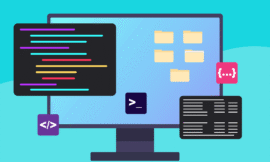Hey there! If you’ve ever had your internet or network suddenly slow down or crash, you know the panic that hits. I’ve been there, staring at the spinning loading wheel, wondering what went wrong. That’s exactly where networking monitoring software saved me more than once—and honestly, it might just save your sanity too. So, let me walk you through what this software is all about and why it matters, whether you’re running a small business or just want your home Wi-Fi to behave.
What Is Networking Monitoring Software Anyway?
Think of networking monitoring software as your network’s personal doctor. Just like a doctor checks your vitals to catch problems early, this software watches over your network 24/7. It tracks everything from how much traffic is flowing, to spotting slowdowns, outages, or even potential security threats.
When I first started using it, I didn’t realize how much was going on behind the scenes. This software looks at all kinds of networks—your home setup, office LAN, or even massive cloud networks—and gives you real-time info about what’s working and what isn’t.
If your network were a highway, the monitoring software is the traffic camera system. It sees where jams are forming, spots accidents, and sends alerts so you can fix issues before they cause a pile-up.
Why You Really Need Networking Monitoring Software
Now, you might be wondering, “Do I really need this?” I get it—when my network hiccupped the first time, I thought, “I’ll just reboot and move on.” But trust me, ignoring network problems is like ignoring a warning light on your car’s dashboard. It might seem fine now, but a bigger breakdown is lurking.
Here’s why it’s a must-have:
Avoid Downtime: For businesses, every minute offline can mean lost sales or frustrated customers. Even at home, a dead network can throw off your work-from-home day or a Netflix binge.
Catch Problems Early: Slow speeds, device failures, or security risks often creep up quietly. Networking monitoring software gives you early warnings so you can fix issues fast.
Peace of Mind: Knowing someone’s watching your network means fewer surprises and less stress.
I remember a time at my office when the network suddenly slowed to a crawl during a big client call. The monitoring tool flagged unusual traffic on one device — it turned out someone had downloaded a huge update in the background. We paused it and saved the day. Simple stuff like that makes a huge difference.
What Features Should You Look For?
There are tons of options out there, but here’s what really matters based on my experience:
Real-Time Alerts: You want to be pinged the moment something goes wrong, not hours later.
Traffic and Bandwidth Monitoring: Knowing who’s hogging your network helps keep things running smooth.
Device Monitoring: It’s handy to see what devices are connected and if any are acting up.
User-Friendly Dashboards: Some tools are like rocket science, but the best ones give you easy-to-read charts and graphs.
Integration Capabilities: If you already use other IT tools, check if your monitoring software plays nice with them.
I once tried a tool that had all these features but was way too complicated for daily use. It’s tempting to go for the flashiest software, but if you’re not comfortable with it, it won’t help much.
Top Networking Monitoring Software to Check Out
Here’s a quick heads-up on some popular choices:
SolarWinds: Great for businesses, packed with features but can be pricey.
PRTG Network Monitor: User-friendly and flexible—perfect for beginners and pros alike.
Nagios: Open-source and powerful, but it can take some tech skills to set up.
When I started, I picked PRTG because it was easy to install and gave me solid alerts without making me feel overwhelmed. If you’re a small business or a home user, that kind of simplicity is gold.
How to Get Started Without Losing Your Mind
Setting up networking monitoring software doesn’t have to be a headache. Here’s what I recommend:
Start Small: Focus on the most important parts of your network first—like your main router or critical devices.
Customize Alerts: Set thresholds so you’re only notified about real problems, not every tiny blip.
Check Regularly: Make a habit of reviewing the dashboard weekly to catch trends before they become emergencies.
Keep Software Updated: Just like apps on your phone, monitoring tools get better and safer with updates.
When I skipped customizing alerts, I got bombarded with notifications about minor things. It was annoying! Once I fine-tuned them, the software became my trusted assistant rather than a nagging alarm.
Beginners vs. Experts: Finding Your Fit
Not everyone needs the same level of complexity. If you’re new, look for software with simple setup guides and friendly support. For the tech-savvy, digging into advanced features like custom scripting or in-depth analytics can be exciting.
I started as a beginner, and it took a few tries before I really understood what data mattered most. But don’t worry—you’ll get there. It’s like learning to drive; you start slow and build confidence.
FAQs About Networking Monitoring Software
Q: What’s the best software for small businesses?
A: PRTG is a great mix of power and ease, but it depends on your network size and budget.
Q: Can monitoring software detect security threats?
A: Yes! Many tools spot unusual traffic or device behavior, which can indicate hacks or malware.
Q: Is it expensive?
A: Costs vary widely. There are free open-source options and paid enterprise-grade solutions. Pick what fits your needs.
Q: Is it hard to install?
A: Many modern tools have simple installers and good guides. Start with a free trial to see.
Q: What’s the difference between cloud-based and on-premises monitoring?
A: Cloud-based tools run online and need less local setup, while on-premises software is installed on your hardware and gives you more control.
Wrapping It Up
Networking monitoring software might sound like a techie luxury, but honestly, it’s more like a safety net for your digital life. From my own ups and downs, I can tell you it’s saved hours of frustration and even money by catching problems early.
If your network matters to you—whether at work or home—it’s worth giving monitoring software a shot. Start simple, stay curious, and soon you’ll be the one everyone calls when the network acts up.
Got questions or stories about your network adventures? I’m all ears!




